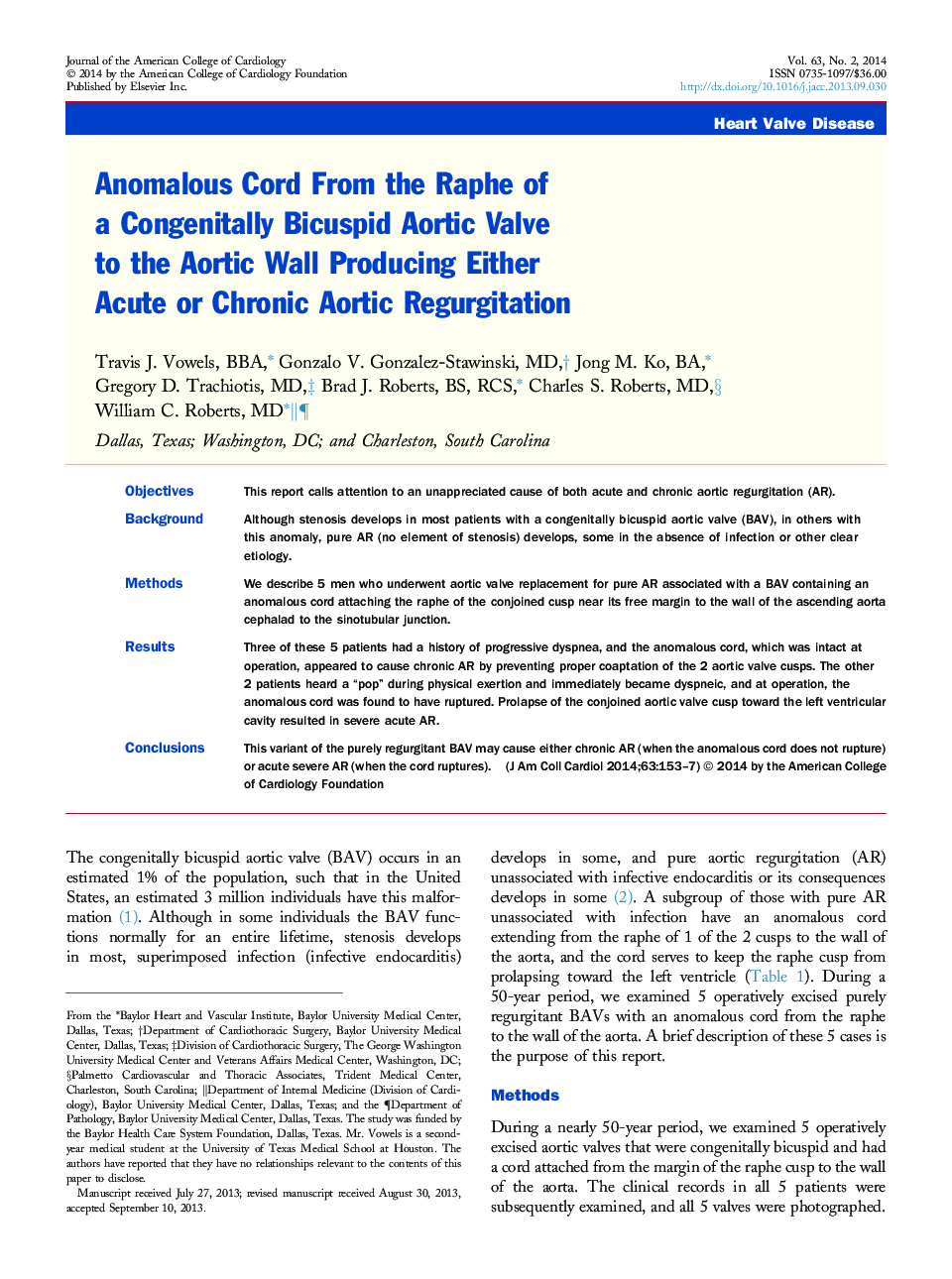| Article ID | Journal | Published Year | Pages | File Type |
|---|---|---|---|---|
| 2946278 | Journal of the American College of Cardiology | 2014 | 5 Pages |
ObjectivesThis report calls attention to an unappreciated cause of both acute and chronic aortic regurgitation (AR).BackgroundAlthough stenosis develops in most patients with a congenitally bicuspid aortic valve (BAV), in others with this anomaly, pure AR (no element of stenosis) develops, some in the absence of infection or other clear etiology.MethodsWe describe 5 men who underwent aortic valve replacement for pure AR associated with a BAV containing an anomalous cord attaching the raphe of the conjoined cusp near its free margin to the wall of the ascending aorta cephalad to the sinotubular junction.ResultsThree of these 5 patients had a history of progressive dyspnea, and the anomalous cord, which was intact at operation, appeared to cause chronic AR by preventing proper coaptation of the 2 aortic valve cusps. The other 2 patients heard a “pop” during physical exertion and immediately became dyspneic, and at operation, the anomalous cord was found to have ruptured. Prolapse of the conjoined aortic valve cusp toward the left ventricular cavity resulted in severe acute AR.ConclusionsThis variant of the purely regurgitant BAV may cause either chronic AR (when the anomalous cord does not rupture) or acute severe AR (when the cord ruptures).
